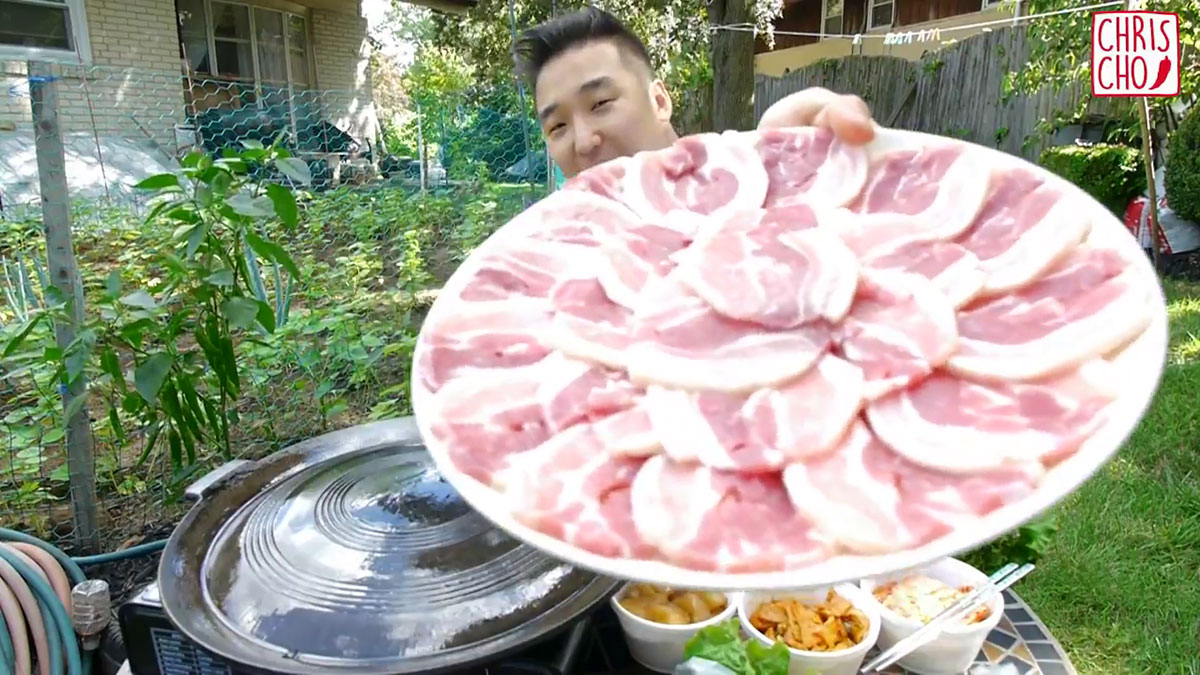
This is the ultimate guide on how to make Korean BBQ at home. Here I’ll teach you what you need to prepare, how it works, how to truly enjoy it, and why you need to do this now~
Many people might think it’s intimidating to DIY your Korean BBQ because of the number of small plates served to you in Korean joints. It can make you think it’s nearly impossible to make it at home.
Honestly though, this is what I’ve been eating most of my life and up until today, it’s still a joy whenever I get to have this spread on the daily. So, I thought sharing this complete guide would also spark joy in everybody else. The key really in making this is to prepare in advance.
Side Dishes for Korean BBQ
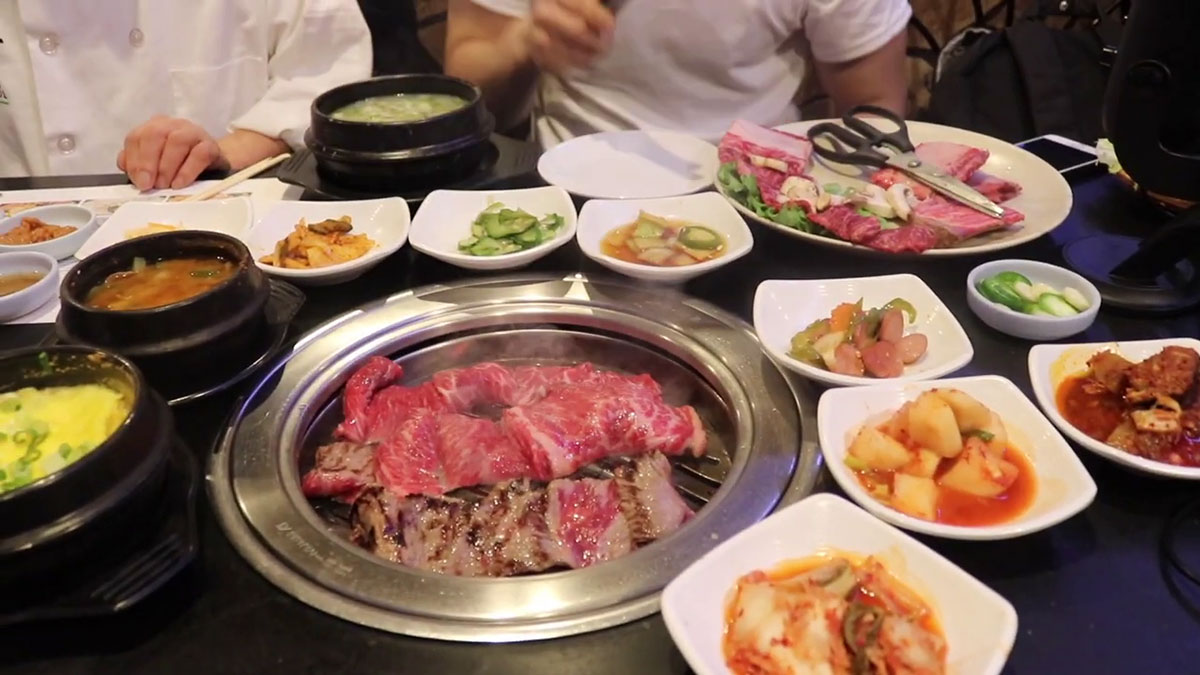
In Korean BBQ restaurants, you get served about 8-10 side dishes on average. Most of them are served in small portions to complement the grilled meat.
For Koreans, having side dishes ready in the fridge is very common. In the same way, I suggest cooking things up a few days before your actual BBQ or you can grab some of them fresh from Hmart.
The most common side dishes in Korean BBQ are:
- Kimchi, which has many varieties such as Napa Cabbage, Radish, Chive, and Scallions
- Stir Fries or Bokkeum such as Fishcake, Sausage, and Squid
- Braised side dish or Jorim such as Sweet Potatoes, Burdock Root, and Lotus Root
- Seasoned vegetables or Muchim such as Beansprouts, Broccoli, Seaweed, Cucumber, and Radish
- Eggs cooked in various ways such as Steamed, Rolled Omelette, and Crab Cakes
- Noodles such as Japchae and Bibim Guksu
- Corn Cheese
Most of these side dishes can be cooked up in advance and stay fresh when stored in the fridge. You can serve them, not just when you are eating Korean BBQ, but also in bento boxes, in having quick meals, etc.
This list is not exhaustive. You can choose to serve whichever you prefer. Whether you choose 2 or 10, it does not really matter, as long as you enjoy your BBQ. Feel free to munch on these as you wait for your meat to cook up~
Meats and Marinade for Korean BBQ
Disclaimer: I get a small commission at no additional cost to you when you make a qualified purchase under the affiliate links.
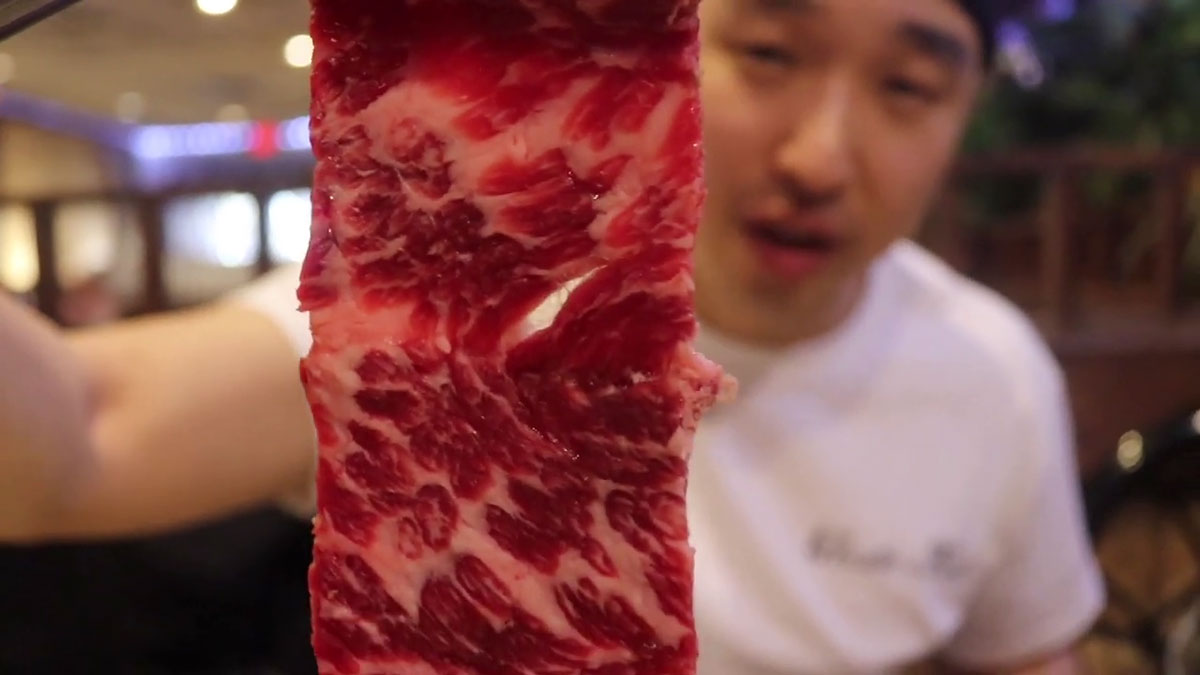
The star of the show is really the different cuts of meat. Such as…
- Pork Belly or Samgyeopsal, can be thin or thick-cut
- Pork Jowl or Hanjeongsal
- Thin Cut Beef from Sirloin, Ribeye, or Brisket
- Short Ribs or Galbi
- Wagyu, Chicken, and Seafood are less common in authentic Korean BBQ but growing in popularity nowadays
Key points about the meat served in KBBQ are:
- It is best to have meat that has some form of fat and is cut thinly. Whether it is the belly side of pork or the marbly part of beef, this is the best because they cook really quickly and it remains juicy… which is honestly the best part!
- Most of the time the meat is unseasoned because there are several delicious sauces you can make which we will discuss later. Nevertheless, you can still serve them with salt and pepper, bulgogi marinade, or spicy marinade.
These meat slices should be available in Hmart, if not, you can ask your local butcher for these parts of the meat and have them slice it thinly.
Grill for Korean BBQ at Home
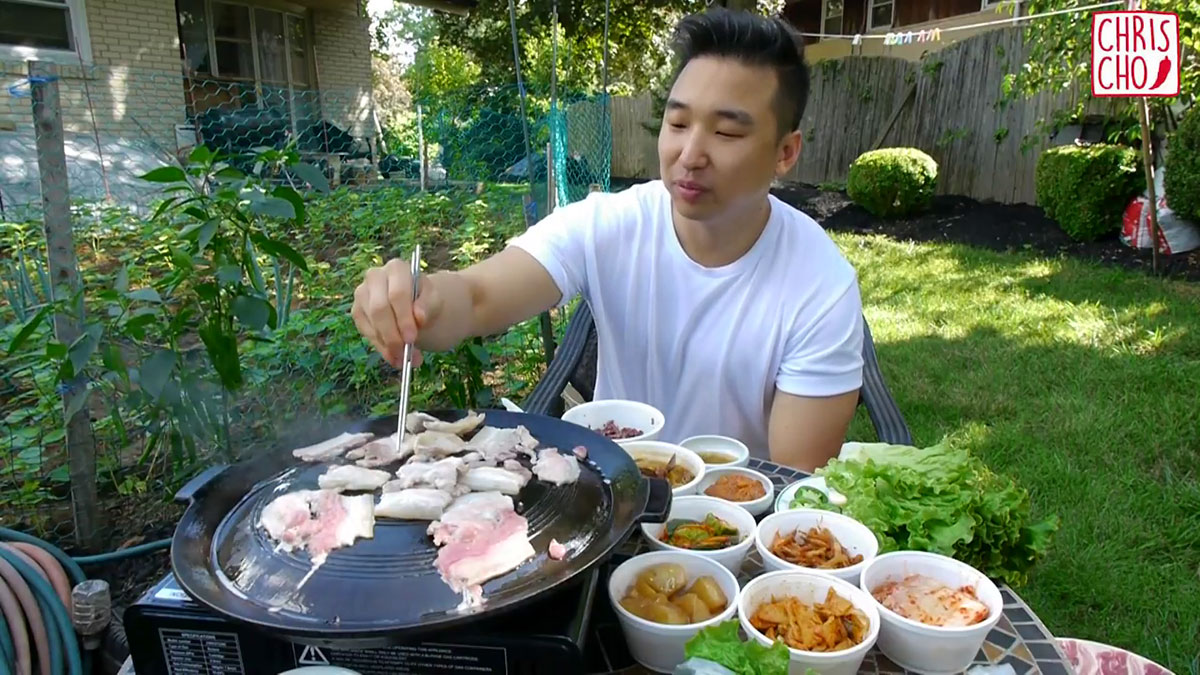
Since we are talking about BBQ, it means we need a grill. Typically, I would say that a charcoal grill is the best. When you go into any Korean joints and they have a table with that kind of grill, you know you’re about to have a good experience.
But I do understand that you can’t buy a special table just to make DIY Korean BBQ. Luckily there are many alternatives nowadays that make it more convenient to do this at home.
Some of the common things you can use are…
- Portable gas stove with a grill pan or a plain pan. It doesn’t really have to be special because both ways work fine.
- Electric grills. With the rising popularity of KBBQ, comes the innovation of electric grills. There are many kinds and they all work perfectly as well.
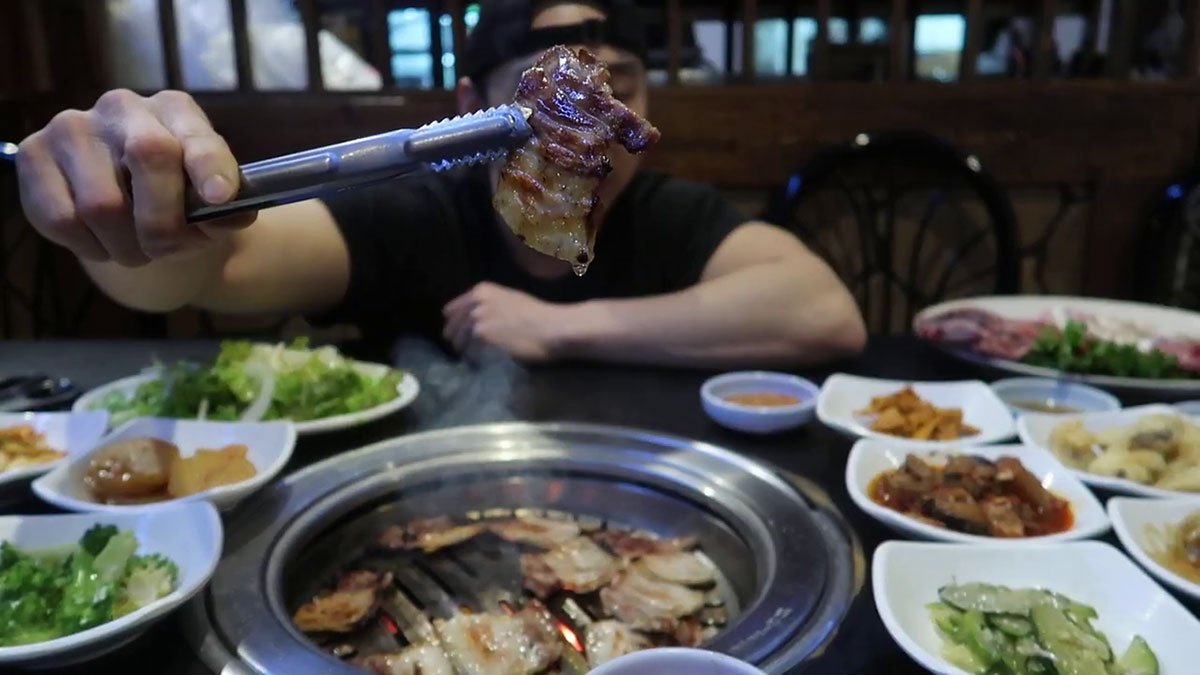
Tips for grilling Korean BBQ meat:
- Make sure that your pan is already hot enough before putting the meat. When you stick the meat in there, it should be sizzling right off the bat.
- Let it sit for a minute or two before flipping. Normally the meat would stick in the pan for the first two minutes, but when it reaches the right sear, it will unstick and will be ready to flip. Be patient! However, if you notice white smoke, it’s a sign that it’s nearly burning. Take that jawn out!
- If possible, get a pan that can be tilted or has a hole that will drain all the rendered oil from the meat. Since the recommended meat has fat, it will definitely pool on the pan and we don’t want none of that here.
- Use a piece of lettuce as a bed for the meat in the grill if you want to keep it heated without burning it.
Other materials you will need if you want the complete experience are small individual plates and bowls, metal chopsticks, tongs for grilling, and scissors to cut the pork belly or the short ribs.
Important Reminder
Before setting everything up, make sure your table is lined with anything that can cover the table. This will help make the cleanup easier because some oil from the meat will definitely splatter.
Another reminder is to have adequate ventilation when you’re indoors. The smokiness from the grill will definitely be all over the place so keep watch of that.
Sauce for Korean BBQ
As mentioned, the meat is unseasoned and is commonly served with sauces. These sauces vary in taste yet are easy to make so it’s very flexible. You can serve all of them up to your family and they can choose however they like to eat their BBQ.
- Ssamjang. It is seasoned soybean paste. It’s a little bit spicy and salty, so it can make unseasoned grilled meat perfectly savory. This should be readily available in tubs in Hmart.
- Salt, Pepper, and Sesame Oil. This is probably the easiest sauce of them all. It’s straightforward salt and pepper, with a little bit of nuttiness from the sesame oil.
- Soy Sauce with Onion. This soy sauce concoction is the perfect balance of salty and tangy which would give the unseasoned meat the umami and acidity that can cut through the fat and oil.
How to Eat Korean BBQ?
Rice, Vegetables, and Soup
While there are already several components for Korean BBQ, some other things that are common and easier to prepare are rice and vegetables like lettuce, perilla leaves, thinly sliced garlic, and sliced pepper.
Small servings of soup are also served with Korean BBQ. Several types of soup that go with it are Soybean Paste Soup or Dwenjang Jjigae, Seaweed Soup, or Instant Ramen! The heat from the soup helps in digesting all the food you ate.
Taking It Up A Notch


With everything you prepared, you can make a Ssam. It’s like a Korean burrito where you wrap rice, pieces of meat dipped in sauce, and a side dish like kimchi or pepper and you eat it all in one bite. Yes, one bite, no questions asked. That’s the classic Korean BBQ experience.
Aside from a ssam, if you have a grill pan, you can also make Kimchi Fried Rice at the tail end of the meal. Usually, we would put all the leftover meat in there and mix it up with some kimchi. It will then be divided for everyone so there will be no leftovers.
But… Why Korean BBQ?
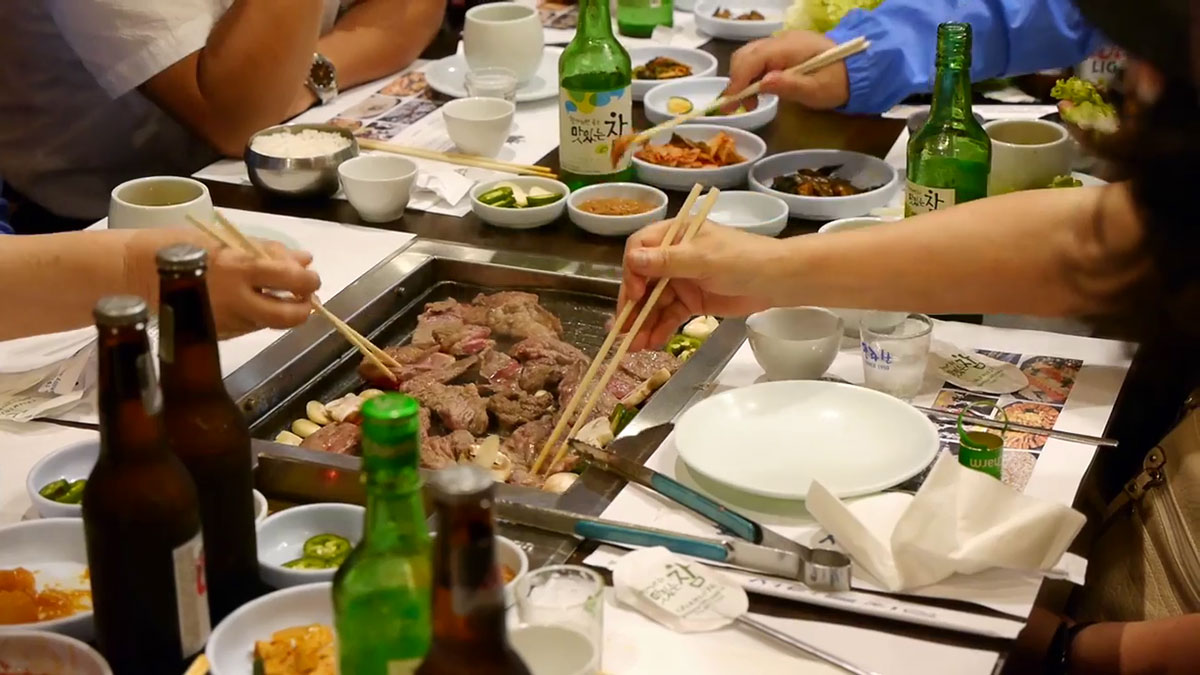
You might think there are so many things to prepare and what is going on just to have grilled meat. But honestly, I think the whole experience is a perfect fit for family meals because it is flexible. Want rice and meat only? No worries, we have that! Want some soup to go with that? No worries, we have that! Want it to become Keto? Skip the rice and fill it in with vegetables!
Korean BBQ is very close to my heart, and these are just some of the things that we commonly prepare. But again, you don’t have to exhaust everything I mentioned here just to have a perfect experience. You can just get a grill, meat, sauce, one or two sides, and a vegetable or rice, and you’re good to go!
The most important thing is that you enjoy the meal with your family. Grill some meat, drink some soju, pace yourself, and have loads of fun!
Make sure to leave a rating, a comment, or tag me on Facebook, Instagram, or Tiktok when you chop them up! Yeobosayo!
The Complete Guide to DIY Korean BBQ
Equipment
- Small Individual Plates and Bowls
- Chopsticks
- Tongs
- Scissors
- Electric Grill Option 1
- Portable Gas Stove with Grill Pan Option 2
Ingredients
Side Dishes (Choose two or more)
- Kimchi Napa Cabbage, Radish, Chive, or Scallions
- Stir Fries or Bokkeum Fishcake, Sausage, or Squid
- Braised Side Dish or Jorim Sweet Potatoes, Burdock Root, or Lotus Root
- Seasoned Vegetables or Muchim Beansprouts, Broccoli, Seaweed, or Cucumber
- Eggs Steamed, Rolled Omelette, or Crab Cakes
- Noodles Japchae or Bibim Guksu
- Corn Cheese
Meat (Choose according to preference and amount according to number of people eating)
- Pork Belly or Samgyeopsal Thin or Thick Cut
- Pork Jowl or Hanjeongsal Thinly cut
- Sirloin, Ribeye, or Brisket Thinly cut
- Short Ribs or Galbi
- Wagyu
- Chicken
- Seafood
Sauce
- Ssamjang
- Salt, Pepper, and Sesame Oil
- Soy Sauce with Onion
Other Ingredients
- Rice
- Lettuce
- Perilla Leaves
- Sliced Peppers
- Thin Sliced Garlic
Instructions
- Prepare side dishes in advance.
- Set up your table by lining it with a cover. Place the grill in the middle and surround it with side dishes served on small plates. Place the individual plates, bowls, and utensils on the seats, and serve the rice, vegetables, and soup on the side.
- In grilling meat, make sure the pan is hot before placing them in it. Wait for a couple of minutes until the meat is perfectly seared on one side before flipping. Wait for another couple of minutes on the other side to ensure the meat is cooked and kept juicy. Dip in the sauce and consume with a bite of rice or a side dish. Slurp soup in between bites to flush everything down.
- To make Ssam: Lay lettuce flat on your hands and layer rice, pieces of meat dipped in sauce, and a piece of kimchi or pepper and wrap it like a burrito. Eat everything in one bite.
- To make Kimchi Fried Rice: Mix leftover rice, meat, and kimchi altogether in the grill pan. Season with salt, pepper, and sesame oil. Divide by the number of people eating.
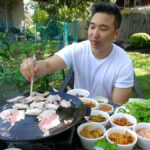
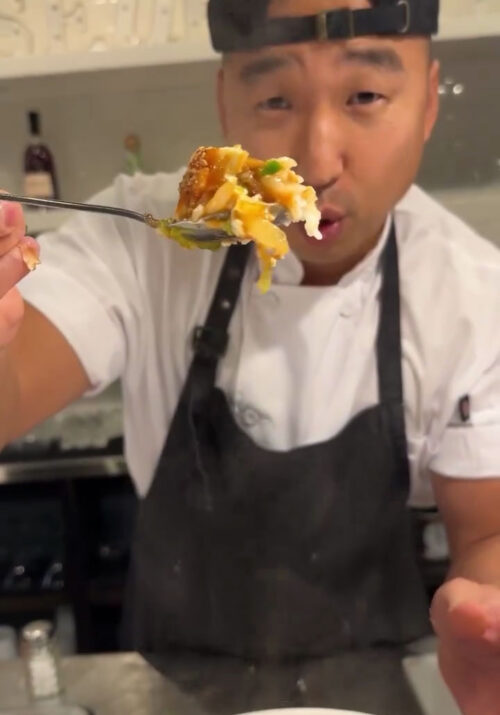
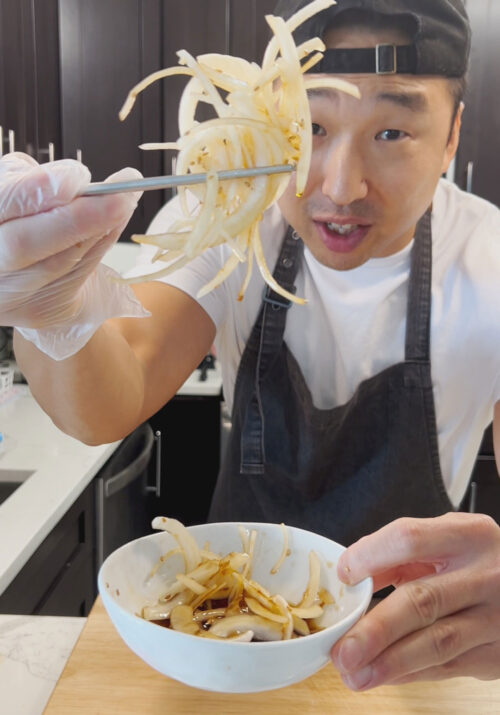
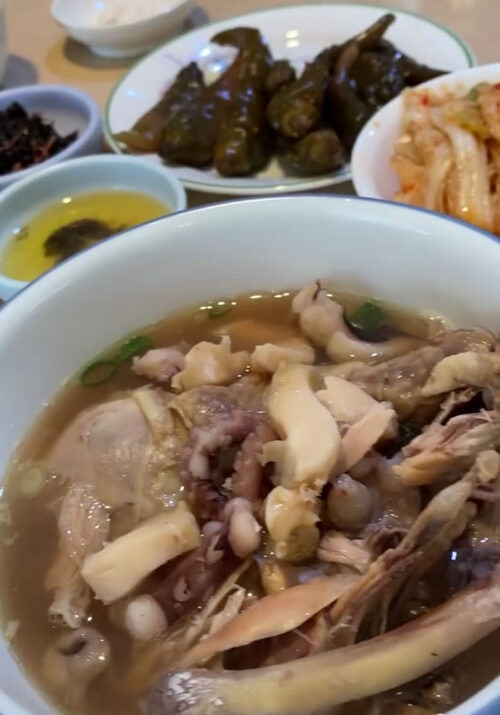


LOVE Love love Chef Chris Cho. Im looking forward to getting to Philadelphia Pa to visit his spot. My wife and i watch everything he puts out and ive made most of the dishes(i do one dish per week on our “date night” it kinda makes it a little more special)so easy to follow and easy to prepare. I look forward to whats coming next.
Yooo, really appreciate the kind words! And I am so happy that the recipes are part of your special night! Hope you come through to the restaurant soon!!
My wife and I finally were able to go to a proper KBBQ restaurant for our anniversary. I have followed and made many of your recipes. Everything I have made personally is spot on with what we had there and they were kind of surprised that I knew half the banchan they put on the table! The only big difference is that I don’t have access to A5 wagyu and 60 day aged ribeye on the regular. Your recipes are great and your videos are amazing. I only hope I get to eat in one of your restaurants one day! Thanks Chef Chris Cho!
I’m so happy to hear this! Hope you enjoyed your KBBQ experience! While cuts like wagyu and aged rib eye are great, it’s also about the other aspects like family, side dishes, hot soup, fresh rice, and some soju that make KBBQ super enjoyable. Thank you so much for the kind words and I do hope you get to come through to the restaurant real soon! Yeobosayo!
I’m so glad I found you! I’m about to do a KBBQ for the first time! We were in Seoul last year and really indulged. The food there is so good! Gwangchang Market was amazing. I bought a flat grill from Amazon – hope it works. I’ve also been growing shiso, so I’m excited to use it! My proteins are wagyu, pork belly, and chicken. Thanks for this info!
So glad you had fun in Korea! It’s so exciting to hear that you’re going to try making KBBQ at home! Hope you enjoy it!!!